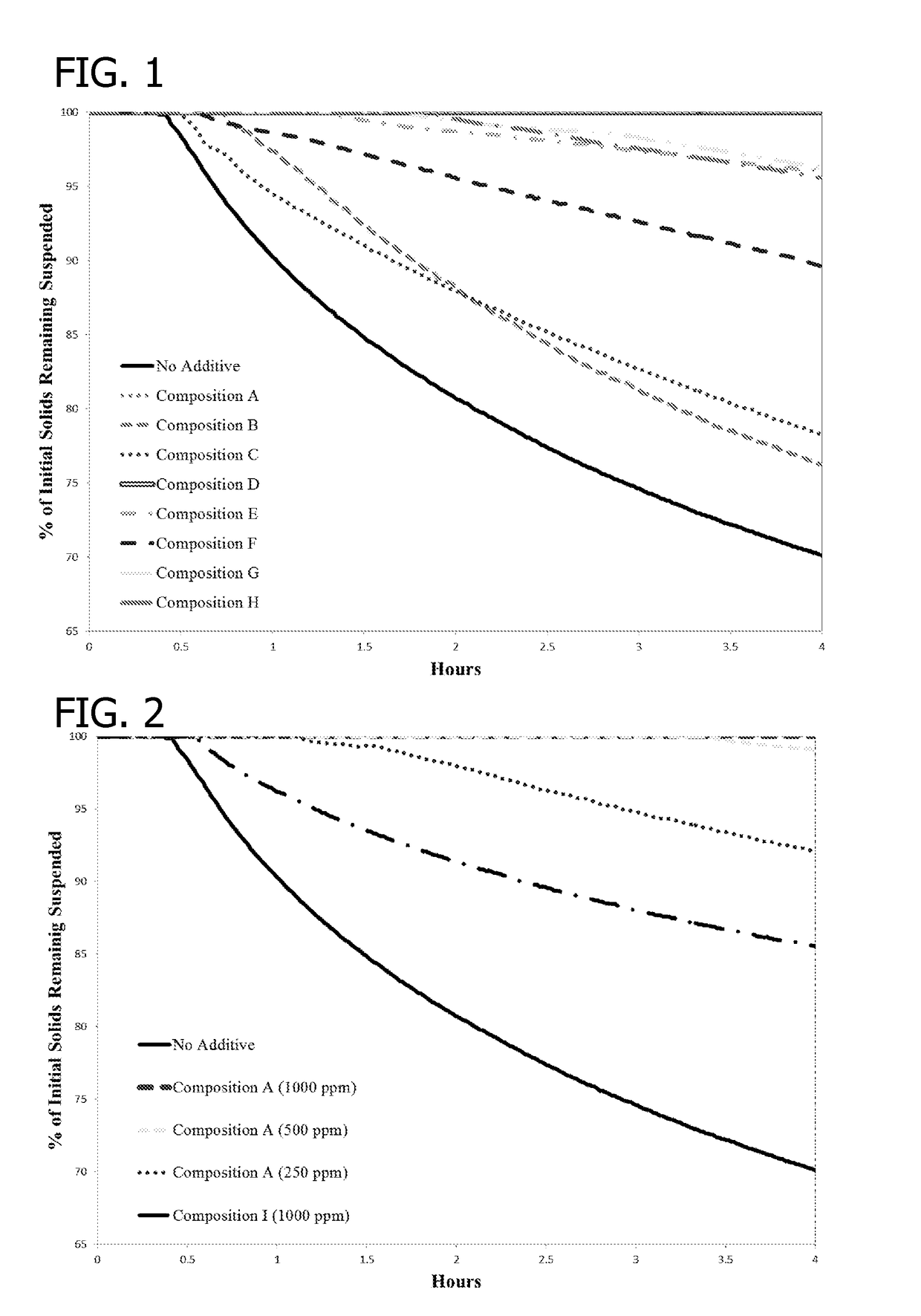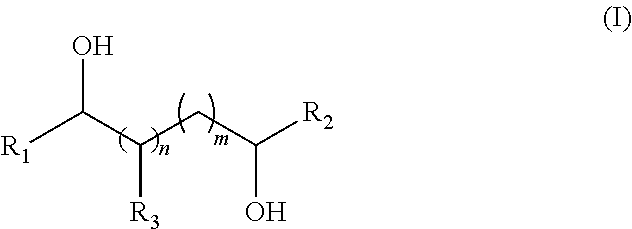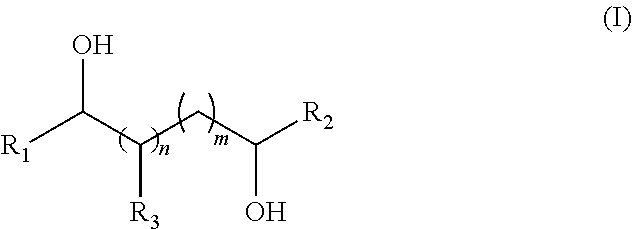Alkyl diols for crude oil treatment
- Summary
- Abstract
- Description
- Claims
- Application Information
AI Technical Summary
Benefits of technology
Problems solved by technology
Method used
Image
Examples
example 1
ls Tested
[0086]The following examples were performed with a variety of alkyl diols that vary in chain length and degree of branching.
[0087]The alkyl diols tested were 1,2-dihydroxydodecane (commercially available from Sigma-Aldrich, identified as composition A, hereinafter), hexylene glycol (commercially available from Shell Chemical, identified as composition B, hereinafter), propylene glycol (commercially available from Lyondell Chemical, identified as composition C, hereinafter), 1,10-dihydroxyldecane (commercially available from Sigma-Aldrich, identified as composition D, hereinafter), 1,2-dihydroxyhexane (commercially available from Sigma-Aldrich, identified as composition E, hereinafter), 2-ethyl-1,3-dihydroxylhexane (commercially available from Sigma-Aldrich, identified as composition F, hereinafter), 3-(C12-C14oxy)-1,2-dihydroxypropane (commercially available from Sigma-Aldrich, identified as composition G, hereinafter), and 1-dodecanol (commercially available from Sasol, id...
example 2
Tests
[0089]Crude oil samples from a formation within the United States were collected that exhibited a wax appearance temperature of about 40° C.
[0090]A crude oil sample (20 mL) was added to a specimen cup. An alkyl diol was then added at a concentration of 1,000 ppm based on the total weight of the sample. Compositions A-H were individually tested. The specimen cup was sealed with a lid and placed in an oven set at 150° F. The specimen cup was removed from the oven after 15 minutes and thoroughly mixed. The specimen cup was allowed to cool to room temperature. A sample (20 mL) was transferred to a TURBISCAN vial.
[0091]The treated crude oil samples were then submitted for TURBISCAN analysis to measure changes in the formation of solids as a function of time.
[0092]The results are visually depicted in FIG. 1.
experiment 3
sts Utilizing Various Concentrations of Treatment
[0093]Utilizing the same procedure as described in Example 2, various concentrations of composition A (250 ppm, 500 ppm, and 1000 ppm) were evaluated for paraffin wax control. Additionally, composition I was used as a comparison.
[0094]The results are visually depicted in FIG. 2.
[0095]When introducing elements of the present invention or the preferred embodiments thereof, the articles “a”, “an”, “the” and “said” are intended to mean that there are one or more of the elements. The terms “comprising”, “including” and “having” are intended to be inclusive and mean that there may be additional elements other than the listed elements.
[0096]In view of the above, it will be seen that the several objects of the invention are achieved and other advantageous results attained.
PUM
 Login to View More
Login to View More Abstract
Description
Claims
Application Information
 Login to View More
Login to View More - R&D
- Intellectual Property
- Life Sciences
- Materials
- Tech Scout
- Unparalleled Data Quality
- Higher Quality Content
- 60% Fewer Hallucinations
Browse by: Latest US Patents, China's latest patents, Technical Efficacy Thesaurus, Application Domain, Technology Topic, Popular Technical Reports.
© 2025 PatSnap. All rights reserved.Legal|Privacy policy|Modern Slavery Act Transparency Statement|Sitemap|About US| Contact US: help@patsnap.com



